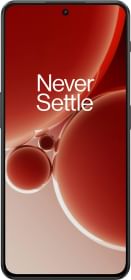Paint Protection Film vs. Ceramic Coating is a question every car owner has to deliberate when deciding on car color protection. At present, these are the two most popular car paint protection ways that are prevailing in the market. It’s important to recognize that each method has pros and cons including cost, efficacy, upkeep, and longevity. However, fret not; this article aims to elucidate these car paint protection options to aid you in making an informed decision. Let’s explore a comprehensive PPF vs Ceramic Coating comparison below.
What is PPF?
Paint Protection Film, often referred to as PPF (or Clear Bra), has become a common term in the automotive industry. While the term Clear Bra may sound amusing, it was a product and term used in the past. Examining images of cars from the 90s reveals a precursor to PPF – a black leather covering fixed to the front, aptly named the black leather bra. Essentially, it was a thicker version of today’s paint protection film, showcasing the evolution of this protective technology.
Advancements in technology have turned Paint Protection Film (PPF) into a transparent, flexible material that seamlessly fits into vehicle crevices. PPF outshines ceramic coatings, offering hydrophobic properties that repel water and robust protection against contaminants, acid rain, bug splatter, and rock chips. Its elastomeric polymer top layer absorbs damage, bouncing back to its original form, making PPF a superior choice for vehicle protection.
What is Ceramic Coating?
Ceramic coating offers a semi-permanent protective layer for your vehicle, applicable to paint, chrome, and plastic trim. Its key ingredients, Silica Dioxide and Titanium Dioxide, provide robust defense for the car’s exterior. The coating is applied, filling microscopic paint pores and imparting a glossy finish. With hydrophobic properties, the paint showcases water-beading characteristics, ensuring a consistently clean appearance.
Paint Protection Film (PPF) Vs Ceramic Coating: What’s the difference?
| Aspect | Paint Protection Film (PPF) | Ceramic Coating |
| Application | Applied as a film, offering comprehensive coverage | Applied as a liquid, bonding with the surface for a protective layer |
| Composition | Transparent and flexible material | Semi-permanent layer with Silica Dioxide and Titanium Dioxide |
| Visibility | Virtually invisible when applied correctly | Imparts a glossy finish to the painted surface |
| Protection | Excellent defense against contaminants, rock chips, and more | Robust protection against various elements and chemicals |
| Flexibility | Malleable and can be stretched to fit into complex spaces | Forms a durable, long-lasting layer on the surface |
| Hydrophobic Properties | Demonstrates water-beading characteristics, keeping the car clean | Provides hydrophobic properties, promoting water beading |
| Reparability | Can be replaced if damaged or worn out | Repairs may require reapplication of the coating |
| Durability | Durable, with elastomeric polymer top layer absorbing and rebounding from damage | Semi-permanent, requiring reapplication after a few years |
| Appearance | Maintains a clear and invisible look when properly installed | Enhances gloss and appearance, showcasing a sleek finish |
PPF vs Ceramic Coating Pros and Cons
While both PPF and Ceramic coating offer numerous benefits, their distinctive features make them suitable for different aspects of vehicle protection.
Benefits of PPF:
1. Superior protection against road debris and rock chips.
2. Absorbs damage before it reaches the paint.
3. Maintains a glossy finish.
4. Offers a protective urethane film.
Considerations for PPF:
1. Not a permanent solution; may need replacement as the film ages.
2. Possibility of discoloration (yellowing) and blistering over time.
3. Can potentially dull the glossiness of the paint.
Benefits of Ceramic Coating:
1. Provides a glossy finish, enhancing the vehicle’s appearance.
2. Acts as a permanent solution.
3. Excellent protection against various elements.
Considerations for Ceramic Coating:
1. Limited protection against severe road debris and rock chips compared to PPF.
2. Does not have a urethane film for absorbing impact.
3. Requires reapplication after a few years for optimal performance.
Choosing between PPF and Ceramic coating depends on your specific priorities. If superior protection against rock chips is crucial, PPF may be preferred. For those seeking a more permanent solution with enhanced gloss, Ceramic coating might be the ideal choice.
Our Thoughts About PPF and Ceramic Coating
It’s all about what matters most to the buyer. PPF shines in its ability to shield against rock chips and scratches, providing a robust defense for the paint. On the other hand, Ceramic coating offers that glossy finish and makes car cleaning a breeze with its hydrophobic nature. Both are excellent choices, and the decision ultimately boils down to what convenience and features align with the buyer’s priorities. It’s about finding that sweet spot that suits your preferences and fits seamlessly into your car care routine.
You can follow Smartprix on Twitter, Facebook, Instagram, and Google News. Visit smartprix.com for the most recent news, reviews, and tech guides.





























